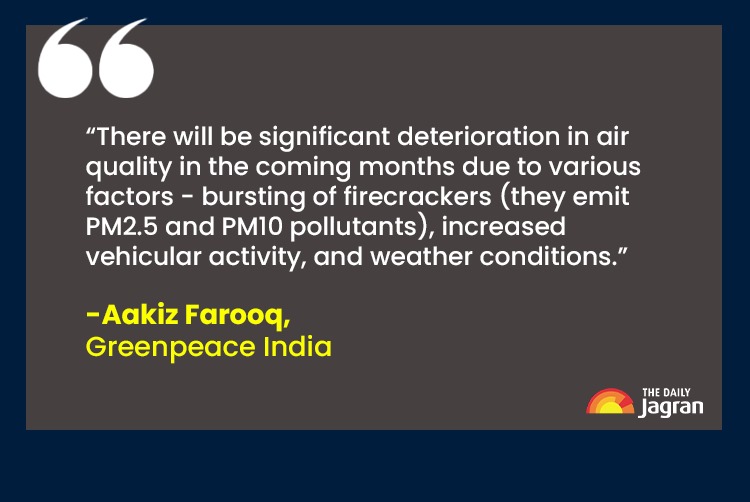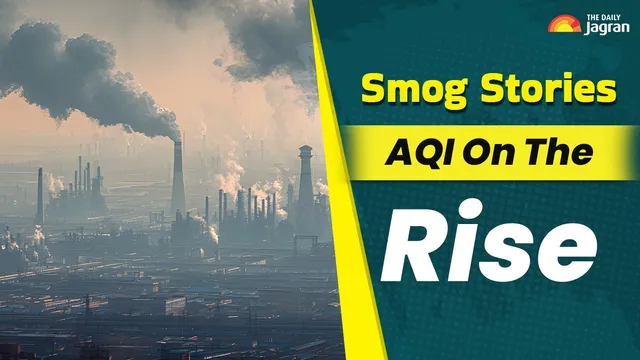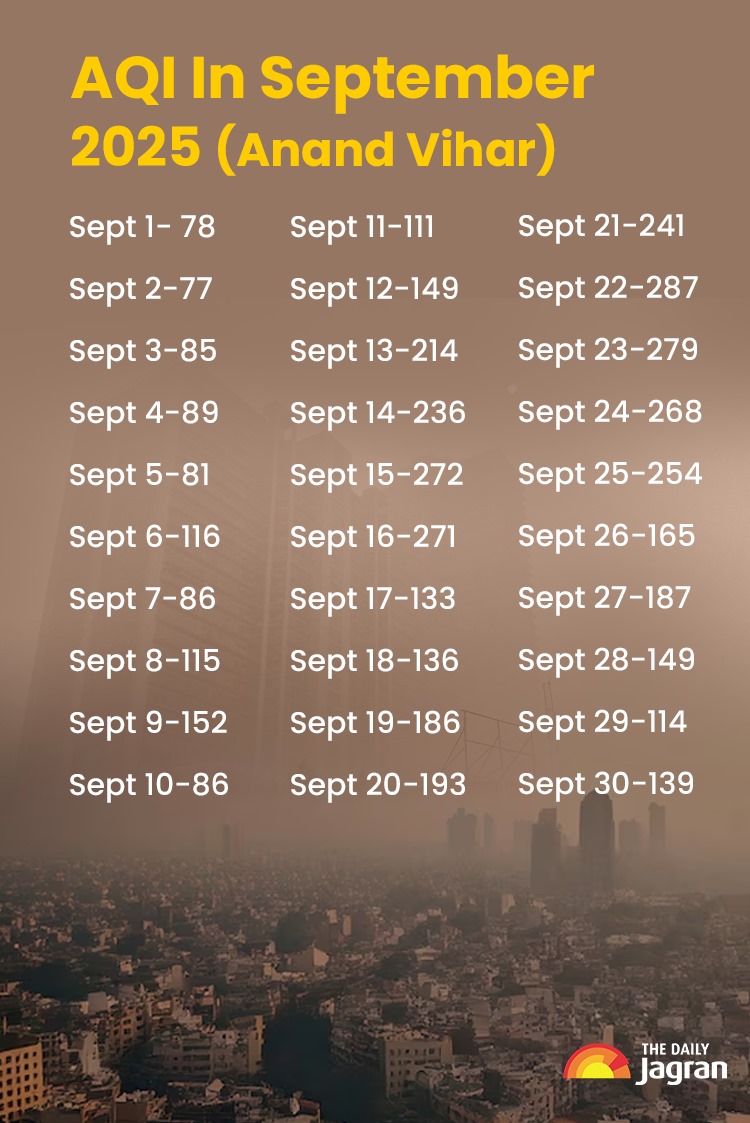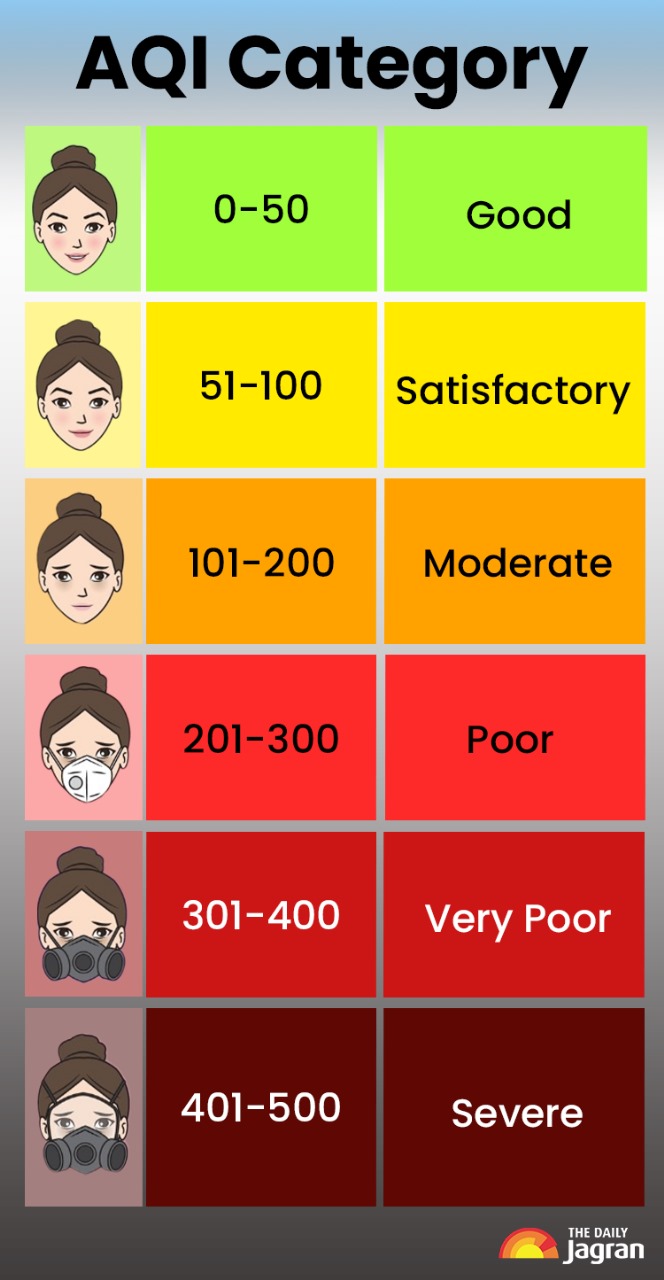- By Nidhi Giri
- Wed, 01 Oct 2025 06:33 PM (IST)
- Source:JND
Smog Stories: The month of September in Delhi can be seen as a transition month for the air we breathe as a remarkable shift can be felt in the air quality. The relatively cleaner post-monsoon air has started to deteriorate, signalling the onset of the "pollution season" in the national capital. After experiencing rare days of 'good' AQI till August this year, September’s air quality worsened, largely remaining in the 'moderate' category. The only noticeable improvement occurred during periods of rainfall. Showers, accompanied by gusty southeasterly winds, helped clear the air and offered a temporary reset. Some days see sharp deterioration in air quality even if the general trend is gradual.
According to data from the Central Pollution Control Board (CPCB), these fluctuations in pollution levels have been closely tied to changing weather conditions. The Daily Jagran spoke to Aakiz Farooq, Climate and Energy Campaigner, Greenpeace India to better understand the changing AQI trends and what measures should be taken to prevent the worsening air quality.
AQI In September 2025
In September, Delhi logged 'moderate' AQI for 18 days straight, for the first time since the year 2016.
What AQI Data Reveals
The AQI trend has largely remained upward in September, with more days entering 'moderate' and 'poor' categories. Here’s what the CPCB data reveals:
Early To Mid September: This part of the month saw relatively better conditions. The monsoon influence led to occasional rain, higher humidity, and stronger winds, which helped disperse pollutants. The air quality stayed in the 'satisfactory' category in the initial days and later worsened to 'moderate'.
Mid To Late September: As the protective monsoon influence weakened, rain events became sparse and wind patterns changed. These combined effects pushed the AQI upward on several days, occasionally entering the 'poor' category.
Why Is Air Pollution Rising?
Explaining the reason behind this drop in air quality, Aakiz says, "Usually when there is rainfall activity especially during monsoons, emissions and dust particles get washed out and as this activity decreases towards the end of September, the pollutants linger in the air."
Talking particularly about the national capital, he says, "Delhi keeps emitting large quantities of pollutants like nitrogen oxide through vehicles. Traffic emission is also one of the major contributing factors for rising air pollution in the city."
ALSO READ: Smog Stories: What Is AQI And How Is It Calculated By Monitoring Major Pollutants In Air? Explained
AQI Trends In Coming Months
Aakiz observed that the air quality is likely to see a "significant deterioration" in the coming days due to firecrackers and vehicular pollution amid changing weather conditions.
Although diwali firecrackers and stubble burning exacerbate air pollution levels in Delhi, they are not the only sources that harm the air. "We also need to understand that increased vehicular numbers and increased urbanisation also are major contributing factors to air pollution problems in Delhi. The impact is just reduced during the monsoon season," he says.
What Can Be Done To Tackle Air Pollution In Delhi
Aakiz further explains the steps that authorities can take to prevent further worsening of air quality in Delhi.
- Halt the increasing number of private vehicles in Delhi. The number of private vehicles in Delhi have been growing every year. These cars emit toxic pollutants.
- Promote the use of public transport in the city (both metro and buses)
- Introduce concessions in public transport during high pollution days
- Set up air pollution monitoring stations
- Restrict private vehicular movement during high pollution days
- Introduce guidelines for industrial pollution monitoring
Warning Bell
October began on a positive note with the AQI being recorded in the 'satisfactory' category. However, September’s data indicates that the air quality is already on a decline. This should sound a warning bell for the citizens as well as the government, who must prepare to tackle the air pollution before the deadly smog engulfs the national capital.
(This article is part of the series 'Smog Stories'. To read more articles in the series, click here)



